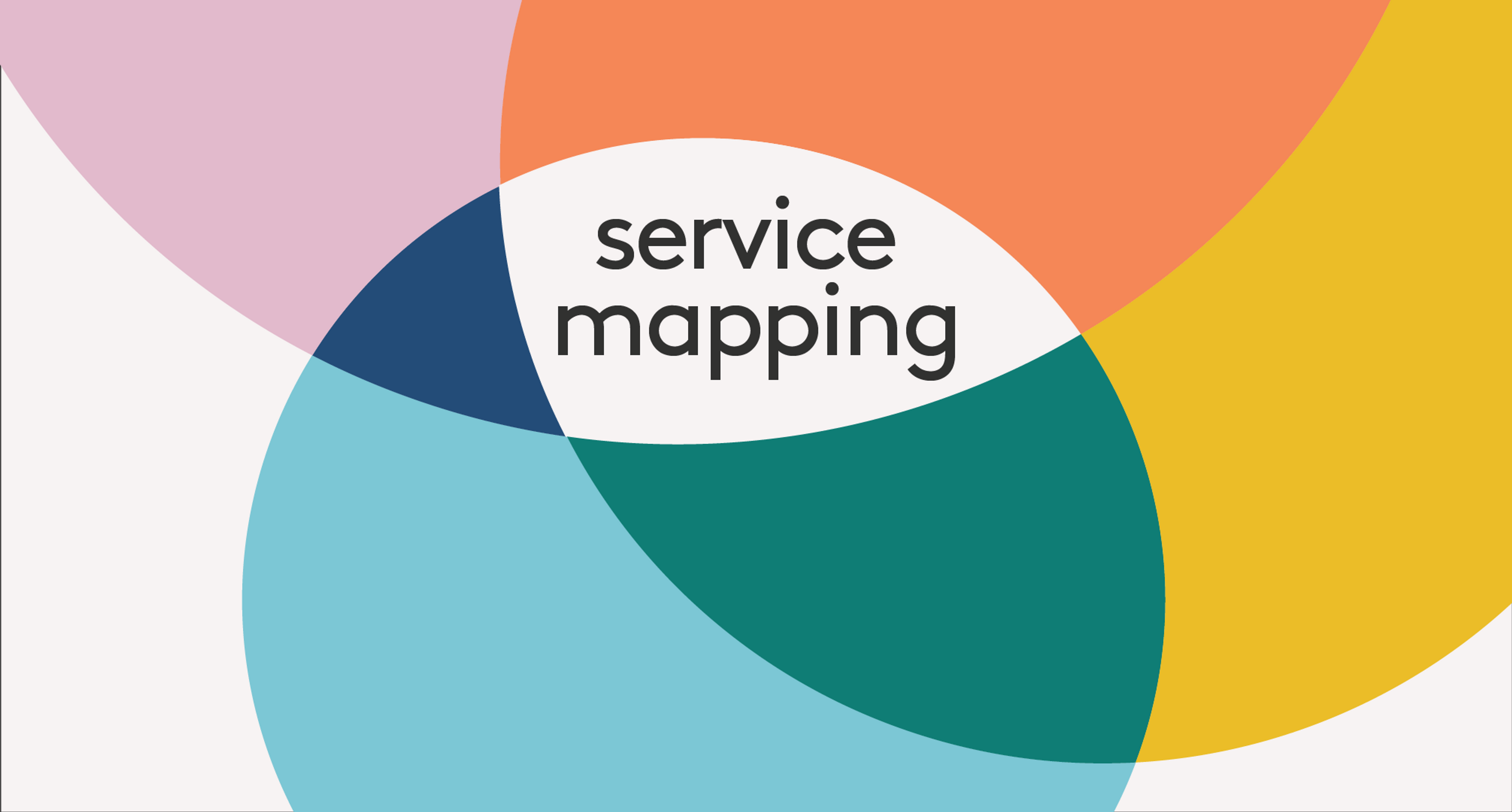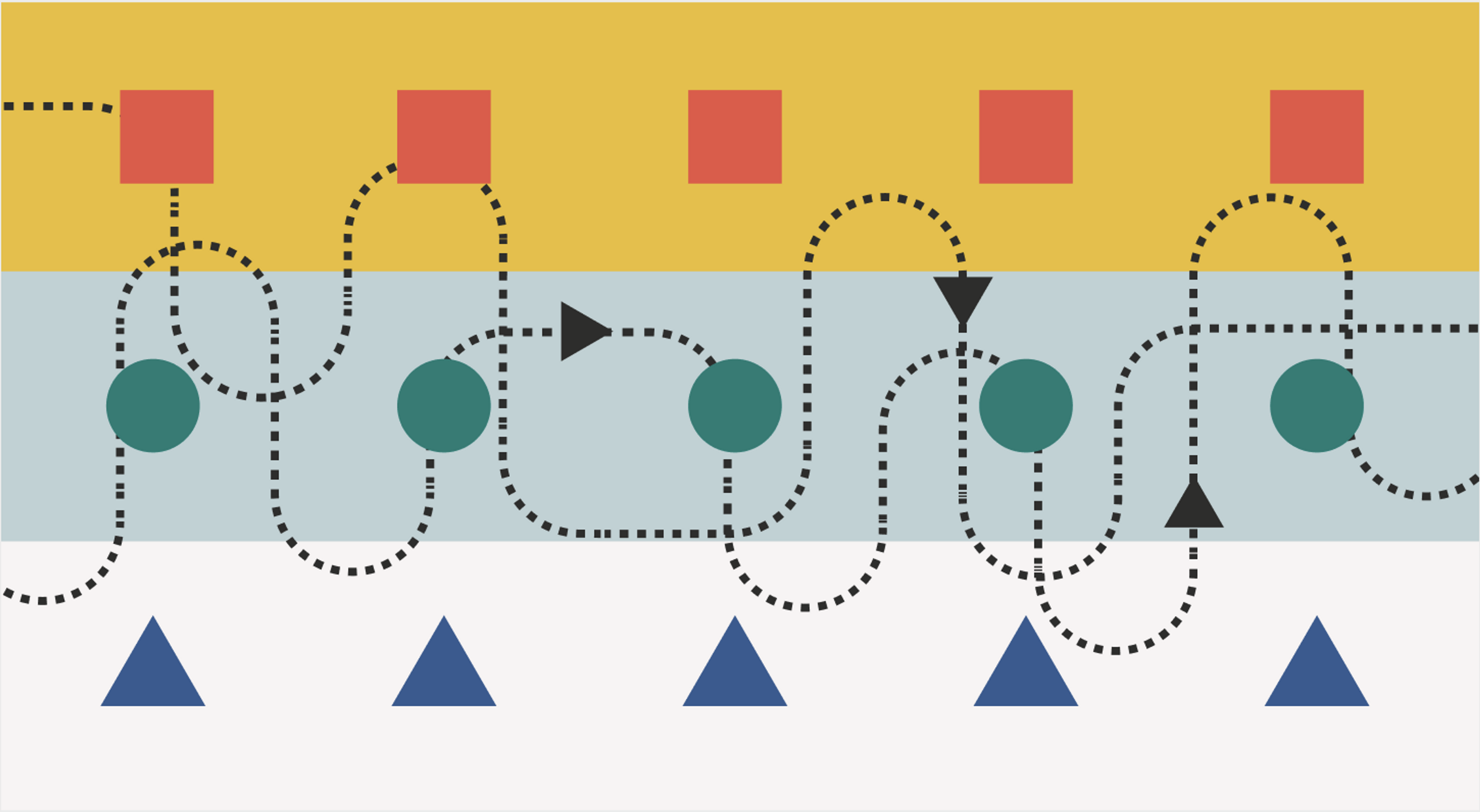
Using service maps for operational efficiency

It’s easy to assume that the internal operations of your organisation - the systems, processes, and tools your staff use every day - are separate to the services you provide for users, and only really impact your staff.
But the reality is that a customer’s experience is the sum of every decision an organisation makes. Every piece of technology, every internal process, and every operational choice ultimately surfaces in the service you deliver.
Many organisations neglect these ‘back-end’ processes in favour of focusing on and enhancing the customer experience.
The technique of service mapping - which prioritises looking at your internal processes as well as your customer-facing ones - turns this upside down.
Using a service map to interrogate and improve those processes enables you to reimagine internal operations as services themselves, with their own set of end users inside your organisation. It not only carries the potential to resolve organisational inefficiencies and improve the experience of your staff, but it offers an untapped opportunity to deliver customer value, despite being one step removed from the customer experience.
The hidden costs of poor internal processes
Most internal processes in large organisations have grown out of immediate needs, departmental preferences, and the technology constraints of the time. The result is often complexity and inefficiency: Different teams solve the same problems in slightly different ways, creating a host of similar-but-different processes which exist in silos.

Poor internal processes take a toll on organisations. They slow things down, create unnecessary friction, and make it difficult to adapt to change. For your staff, this friction manifests as frustration and wasted effort. In many cases, the same problems are certain to impact the customer.
Consider a contact centre colleague trying to resolve a customer's issue. If they have to navigate several different systems, manually copy and paste information, and wait for slow databases to respond, that friction is directly transferred to the customer in the form of a longer wait time to speak to someone, followed by a slow, frustrating conversation. The colleague's poor user experience becomes the customer's poor user experience.
The power of service mapping
In many organisations, internal processes aren’t treated as a priority. Using service maps helps to understand and demonstrate their impact in four significant ways:
1. Identifying inefficiencies
A service map allows everyone to see and understand where the problems lie in your end-to-end process. You can pinpoint bottlenecks where work piles up, identify duplications, and see where manual workarounds are propping up a broken system.
2. Quantifying the cost of inefficiencies
Once you’ve identified a bottleneck, you can start to measure its impact. How many hours are lost to it each week? What is the cost of the software licences for those three systems that all do roughly the same thing?
3. Building a mandate for change
Mapping your internal processes alongside the user experiences of both customers and colleagues makes this connection between internal users and customers visible.
It breaks down the divisions of ‘front-office’ and ‘back-office’ and demonstrates the link between them. This is one of the most effective ways to highlight the impact of internal services and build a case for improving them.
4. Breaking down organisational siloes
Large, complex organisations are often full of silos. Each team has its own priorities, its own language, and its own perspective on what the problems are.
On its own, a service map won't fix anything. But the act of service mapping - and the conversations it sparks - reveals the connections between siloed teams, and forces them into the same room.
Creating this map may be the first time people from different parts of a service - such as finance, IT, or frontline staff - have ever collaborated to look at the whole picture. By providing a visual, objective representation of organisational processes, the map facilitates cross-functional conversations that pave the way for a new way of working.
Transforming internal operations to be service-led
Rather than thinking in terms of individual department activities, the service map - and the cross-functional collaboration it triggers - draws attention to the services which exist internally, forcing you to orient your internal processes around internal users, and to think in terms of outcomes.
This enables you to be service-led at the different layers of your organisation.
Consider the example of the contact centre. Where teams are joining together multiple legacy case management systems with manual spreadsheet workarounds, it is essential to bring frontline colleagues into the conversation.
Capturing what colleagues are doing based on observation of their day-to-day work, and including them within cross-functional teams is foundational to improving the services. The fact that they are colleagues - not customers - doesn’t diminish the value of prioritising their needs.
Having operations, developers, designers, analysts and product colleagues working alongside each other can be a rapid route to realising tactical operational efficiencies, like reducing error and increasing speed through automation of repetitive tasks. These should be balanced with using learning to inform longer term strategic change to improve internal systems, beyond just tactical fixes.
Delivering untapped value for customers
When we talk about service mapping, the conversation tends to gravitate towards the external user or customer. The idea is: map the user journey, identify their pain points, and redesign services to create a smoother, more intuitive experience.
But this is only half the story.
Using a map of the whole service to prioritise internal process improvements has the potential to improve the customer experience in a way that would be impossible with a narrow focus on improving the front-end. It redefines success as delivering value to the end user - whether they are inside or outside of the organisation.
By starting from a service map that considers the different layers in your organisation, you do the hard, foundational work that will produce radical changes on the surface.
Working in this way is not only more efficient for your organisation and more rewarding for your teams. It is an untapped opportunity to deliver customer value.
And it all starts with making a map.
To read more on the power of service design, request your free copy of our publication: Competitive Advantage by Design.
Written by

Alistair Ruff
Director
